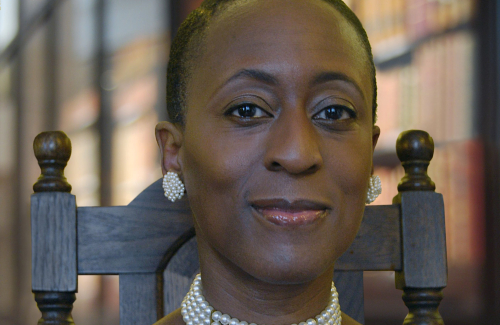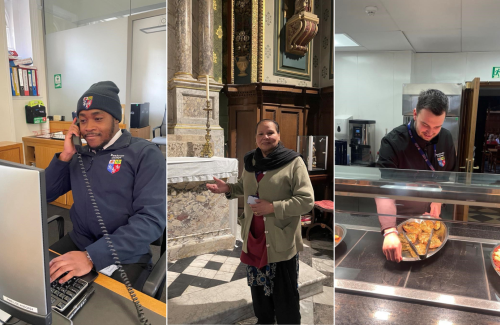More Pembroke news
What can a medieval bishop teach us about conception of colour?
NEWS |
Dr Hannah Smithson, Pembroke Fellow in Experimental Psychology, is a key collaborator in an interdisciplinary study of how a medieval bishop’s theories inspired modern thinking about colour conception and the rainbow which has been published in the prestigious journal, Nature Physics.
The study, examining the work of Bishop Robert Grosseteste (c.1170-1253), stems from the Durham University-led Ordered Universe project, an investigation into medieval science involving researchers from the sciences, social sciences and arts and humanities. It was co-authored by Dr Smithson along with Dr Giles Gasper and Professor Tom McLeish, of Durham University.
Robert Grosseteste was a medieval scholar whose investigations into the nature of light - De colore (On Colour), De iride (On the Rainbow), and De luce (On light) – provide a unique insight into the longer story of human understanding of natural phenomena.
Grosseteste moved away from the Aristotelian one-dimensional scale of seven colours existing between black and white, by noting that the colours can differ from black and white according to their place within a three-dimensional space.
In the De iride, Grosseteste notes that colour variation occurs within a rainbow, but also between rainbows depending on the purity of the medium – as occurs with differently sized water droplets – and depending on the angle of the sun which affects the light creating a rainbow.
Dr Hannah Smithson said: “Almost 800 years after he wrote them, reading Grosseteste’s treatises has prompted the exploration of a new co-ordinate system of colour.
“One of the most surprising things to discover was that, by formally modelling the colours that are produced in naturally occurring rainbows, we have shown that Grosseteste’s scheme is a perfectly valid way to navigate perceptual colour space with three independent variables, despite its unfamiliarity to modern eyes.”
Dr Giles Gasper added: “Reading of Grosseteste’s scientific treatises requires an interdisciplinary effort.
“Handwritten manuscripts, often damaged or quirky in their penmanship, are challenging to transcribe, using an evolving Latin language in which the precise meaning of the words is not easy to pin down.
“The subject matter is mathematical, and expressed in such economical language that it needs a wide range of disciplinary experts to unpack the texts in their full meaning.
Professor Tom McLeish, project member and also Durham’s Pro-Vice-Chancellor for Research, said: “Such collaboration yields dividends for humanities as much as it does for modern science, and is an important corrective to the common perception of science as a modern invention.”
To read the Nature Physics article click here.
More on the Ordered Universe project can be found here. This research is funded by the AHRC.
NB Dr Smithson and her colleagues will be giving a public lecture at Pembroke College Oxford on Friday 3rd October - details and booking arrangements will be announced on the Pembroke Events web page - please email communications@pmb.ox.ac.uk if you would like to be kept informed.

